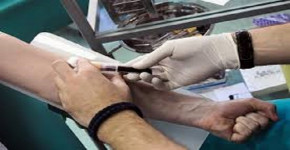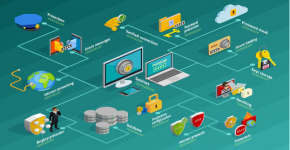 Launch apps instantly. Claim $200 credits on DigitalOcean
Launch apps instantly. Claim $200 credits on DigitalOcean
Automotive Bumper Market - Current Analysis and Forecast [2028]
Written by varun » Updated on: March 28th, 2024
![Automotive Bumper Market - Current Analysis and Forecast [2028]](https://indibloghub.com/image/courses/660504f4450499284_1711604980.png/700_400)
According to TechSci Research report, “Global Automotive Bumper Market - Industry Size, Share, Trends, Competition Forecast & Opportunities, 2028”, the Global Automotive Bumper Market stood at USD 9.62 Billion in 2022 and is anticipated to grow with a CAGR of 7.54% in the forecast period, 2024-2028. The Global Automotive Bumper Market has been experiencing remarkable growth over the past few decades. This growth can be attributed to the continuous rise in vehicle production and the increasing awareness among consumers regarding vehicle safety standards.
As an indispensable component of any vehicle, the bumper plays a pivotal role in not only absorbing impact during collisions but also in safeguarding passengers and minimizing repair expenses. With its ability to protect both the vehicle and its occupants, the bumper stands as a crucial element that ensures enhanced safety and reduced financial burdens for car owners.
As we step into the next decade, several key factors are poised to drive the market forward. With continuous advancements in materials and design, manufacturers are compelled to push the boundaries of innovation and optimize bumper performance to meet stringent vehicle safety regulations. Moreover, the surging popularity of electric and autonomous vehicles not only introduces new opportunities but also brings forth a whole new set of challenges that the bumper market must navigate. With these emerging trends and demands, the industry is set to undergo a transformative journey in the coming years.
In terms of materials, the use of plastics and composites in bumper manufacture is gaining momentum due to their superior energy absorption, lightweight, and cost-effectiveness. This shift is also being fueled by the global push towards sustainability and reduced vehicle emissions. Lighter bumpers not only contribute to better fuel efficiency and lower CO2 emissions, but they also offer improved maneuverability and reduced wear and tear on other vehicle components. Additionally, the use of plastics and composites provides opportunities for innovative design and customization, allowing manufacturers to create bumpers that are not only functional but also aesthetically pleasing. Overall, this trend towards using plastics and composites in bumper production showcases the industry's commitment to continuously improving vehicle performance, safety, and environmental impact.
Region-wise, Asia-Pacific (APAC) holds a dominant position in the global automotive bumper market, thanks to the high vehicle production rates in countries like China, India, and Japan. This region is also home to several leading bumper manufacturers, hence contributing significantly to the global supply.
Furthermore, the competitive landscape is characterized by the presence of numerous global and regional players, making the market highly fragmented. Market competition is intense, with players competing based on factors such as product quality, innovation, and pricing.
Browse over market data Figures spread through 180 Pages and an in-depth TOC on the "Global Automotive Bumper Market” @ https://www.techsciresearch.com/report/automotive-bumper-market/22008.html
The Global Automotive Bumper Market is experiencing a transformative phase, marked by technological advancements, shifting consumer preferences, and a heightened focus on sustainability. Bumpers, once considered primarily for their utilitarian role in vehicle safety, have evolved into integral components that contribute significantly to the overall aesthetics, functionality, and safety of modern vehicles.
One of the defining trends in the Automotive Bumper Market is the increasing integration of advanced materials for lightweighting. As the automotive industry places a growing emphasis on fuel efficiency and environmental sustainability, manufacturers are adopting materials such as advanced plastics, composites, and aluminum to construct bumpers.
These materials offer a favorable strength-to-weight ratio, addressing the dual objectives of reducing overall vehicle weight for enhanced fuel efficiency without compromising safety standards. The trend aligns with the industry's commitment to sustainability, fuel efficiency, and compliance with stringent regulatory standards, positioning lightweighting as a key focus in the evolution of automotive bumper materials.
The rise of smart vehicles and the integration of advanced technologies have given birth to a notable trend in the Automotive Bumper Market – the advent of smart bumpers. Bumpers are no longer passive components solely designed for impact absorption; they have become hubs for sensors, cameras, and radar systems that contribute to advanced driver assistance systems (ADAS) and other intelligent features. Smart bumpers play a crucial role in collision avoidance, parking assistance, and pedestrian detection, aligning with the broader industry shift toward vehicle connectivity and automation. This trend underscores the integral role of bumpers in shaping the next generation of vehicle safety and functionality.
Customization and aesthetic innovation have emerged as prominent trends shaping the visual identity of vehicles and influencing the Automotive Bumper Market. Consumer preferences for unique vehicle designs have prompted automakers to focus on creating distinctive and visually appealing bumper designs. Bumpers, once perceived primarily as functional components, have become instrumental in reflecting brand identity and meeting the evolving aesthetic expectations of consumers. The trend of customization extends to the use of different finishes, textures, and styling elements, allowing automakers to differentiate their products and cater to diverse consumer tastes.
Sustainability and recyclability initiatives have gained traction in the Automotive Bumper Market as the industry aligns with broader environmental goals. Bumper manufacturers are actively exploring materials and manufacturing processes that adhere to sustainable practices, including the use of recyclable materials and eco-friendly production methods. The commitment to reducing the environmental footprint extends to end-of-life considerations, with a focus on enhancing the recyclability of bumper materials. Recyclable plastics and other environmentally friendly materials are increasingly finding applications in bumper manufacturing, responding to consumer demands for eco-conscious products and contributing to circular economy principles.
The integration of advanced safety features represents a pivotal trend in the Automotive Bumper Market, driven by the continuous evolution of safety standards and the industry's commitment to enhancing overall vehicle safety. Bumpers, traditionally designed for impact absorption, are now equipped with sensors and cameras that facilitate advanced safety functionalities. Features such as pedestrian detection systems, automatic emergency braking, and adaptive cruise control often rely on technologies embedded in bumpers. This trend aligns with global efforts to reduce road accidents and underscores the crucial role of bumpers in the holistic approach to vehicle safety.
While these trends drive innovation and demand in the Automotive Bumper Market, the industry faces notable challenges. Stringent regulatory compliance and certification processes pose complexities for manufacturers, requiring them to navigate a landscape of evolving safety and environmental standards. The challenge of material selection and lightweighting constraints necessitates a delicate balance between reducing vehicle weight and ensuring optimal bumper performance. The complexity of integrating advanced technologies into bumpers, coupled with the potential for global supply chain disruptions and raw material cost fluctuations, presents additional challenges for the industry. Design complexity and compatibility across various vehicle models further compound the multifaceted nature of challenges in the Automotive Bumper Market.
In conclusion, the Global Automotive Bumper Market is witnessing a dynamic interplay of trends and challenges as it adapts to technological advancements, consumer preferences, and sustainability imperatives. Bumpers, once seen as utilitarian components, have become integral to the overall identity and safety of vehicles. As the industry navigates these trends and challenges, the Automotive Bumper Market is poised to play a pivotal role in shaping the future of vehicle design, safety, and sustainability.
Major companies operating in the Global Automotive Bumper Market are:
- Toyota Boshoku Corporation
- Plastic Omnium
- Magna International, Inc.
- Toyoda Gosei Co., Ltd
- SMP Deutschland GmbH
- Yanfeng Plastic Omnium automotive Exterior Systems Co. Ltd
- JiangNan Mould & Plastic Technology Co., Ltd.
- Venture Otto SA (Pty) Ltd.
- NTF Private Ltd
- Fab Fours, Inc.
Download Free Sample Report @ https://www.techsciresearch.com/sample-report.aspx?cid=22008
Customers can also request for 10% free customization on this report.
“The Global Automotive Bumper Market is undergoing a transformative evolution marked by technological advancements and consumer-driven trends. Bumpers, once conventional safety components, now integrate advanced materials for lightweighting, feature smart technologies for enhanced safety, and showcase customizable designs meeting aesthetic preferences. Sustainability initiatives and recyclability further underscore the industry's commitment to environmental responsibility. As a pivotal element in vehicle safety, functionality, and aesthetics, the Automotive Bumper Market reflects the automotive industry's dynamic response to the evolving landscape of regulatory compliance, consumer demands, and the pursuit of a sustainable and technologically advanced future.” said Mr. Karan Chechi, Research Director with TechSci Research, a research-based management consulting firm.
“Automotive Bumper Market –Global Industry Size, Share, Trends, Opportunity, and Forecast, Segmented By Material Type (Metal, Fiber, Composite Plastic), By Vehicle Type (Commercial Vehicles, Passenger Vehicles), By Positioning (Front Ends, Rear Ends), By Region,Competition, 2018-2028”, has evaluated the future growth potential of Global Automotive Bumper Market and provides statistics & information on market size, structure and future market growth. The report intends to provide cutting-edge market intelligence and help decision makers take sound investment decisions. Besides, the report also identifies and analyzes the emerging trends along with essential drivers, challenges, and opportunities in the Global Automotive Bumper Market.
You may also read:
Automotive Metal Market - Current Analysis and Forecast [2028]
Automotive Magnesium Alloy Market - Competitive Landscape and Innovation
Automotive Biofuels Market [Latest] Report by Analysis, Share, Leaders
Automotive Electric Fuel Pumps Market [2028]- Exploring Robust Growth & Forecast
Automotive Steering Systems Market - Rising Demand and Growth Trends
Table of Content-Automotive Bumper Market
- Introduction
1.1. Product Overview
1.2. Key Highlights of the Report
1.3. Market Coverage
1.4. Market Segments Covered
1.5. Research Tenure Considered
- Research Methodology
2.1. Objective of theStudy
2.2. Baseline Methodology
2.3. Key Industry Partners
2.4. Major Association and Secondary Sources
2.5. Forecasting Methodology
2.6. Data Triangulation & Validation
2.7. Assumptions and Limitations
- Executive Summary
3.1. Market Overview
3.2. Market Forecast
3.3. Key Regions
3.4. Key Segments
- Impact of COVID-19 on Global Automotive Bumper Market
- Global Automotive Bumper Market Outlook
5.1. Market Size & Forecast
5.1.1. By Value & Volume
5.2. Market Share & Forecast
5.2.1. By Materials Market Share Analysis (Composite Plastic, Metal, and Fiber)
5.2.2. By Positioning Market Share Analysis (Front Ends and Rear Ends)
5.2.3. By Sales Channel Market Share Analysis (OEM and Aftermarket)
5.2.4. By Regional Market Share Analysis
5.2.4.1. Asia-Pacific Market Share Analysis
5.2.4.2. Europe & CIS Market Share Analysis
5.2.4.3. North America Market Share Analysis
5.2.4.4. South America Market Share Analysis
5.2.4.5. Middle East & Africa Market Share Analysis
5.2.5. By Company Market Share Analysis (Top 5 Companies, Others - By Value, 2022)
5.3. Global Automotive Bumper Market Mapping & Opportunity Assessment
5.3.1. By Materials Market Mapping & Opportunity Assessment
5.3.2. By Positioning Market Mapping & Opportunity Assessment
5.3.3. By Sales Channel Market Mapping & Opportunity Assessment
5.3.4. By Regional Market Mapping & Opportunity Assessment
- Asia-Pacific Automotive Bumper Market Outlook
6.1. Market Size & Forecast
6.1.1. By Value & Volume
6.2. Market Share & Forecast
6.2.1. By Materials Market Share Analysis
6.2.2. By Positioning Market Share Analysis
6.2.3. By Sales Channel Market Share Analysis
6.2.4. By Country Market Share Analysis
6.2.4.1. China Market Share Analysis
6.2.4.2. India Market Share Analysis
6.2.4.3. Japan Market Share Analysis
6.2.4.4. Indonesia Market Share Analysis
6.2.4.5. Thailand Market Share Analysis
6.2.4.6. South Korea Market Share Analysis
6.2.4.7. Australia Market Share Analysis
6.2.4.8. Rest of Asia-Pacific Market Share Analysis
Copyright © 2024 IndiBlogHub.com Hosted on Digital Ocean









Post a Comment
To leave a comment, please Login or Register